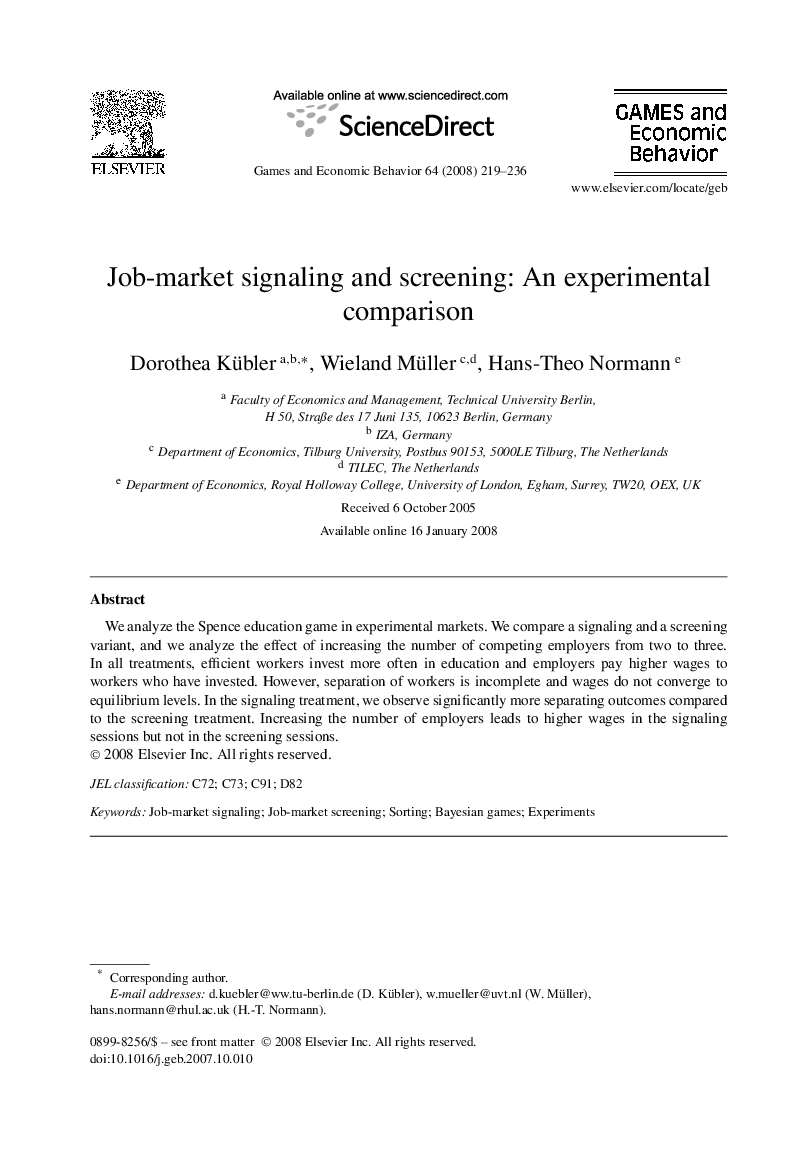| Article ID | Journal | Published Year | Pages | File Type |
|---|---|---|---|---|
| 5072889 | Games and Economic Behavior | 2008 | 18 Pages |
Abstract
We analyze the Spence education game in experimental markets. We compare a signaling and a screening variant, and we analyze the effect of increasing the number of competing employers from two to three. In all treatments, efficient workers invest more often in education and employers pay higher wages to workers who have invested. However, separation of workers is incomplete and wages do not converge to equilibrium levels. In the signaling treatment, we observe significantly more separating outcomes compared to the screening treatment. Increasing the number of employers leads to higher wages in the signaling sessions but not in the screening sessions.
Related Topics
Social Sciences and Humanities
Economics, Econometrics and Finance
Economics and Econometrics
Authors
Dorothea Kübler, Wieland Müller, Hans-Theo Normann,
